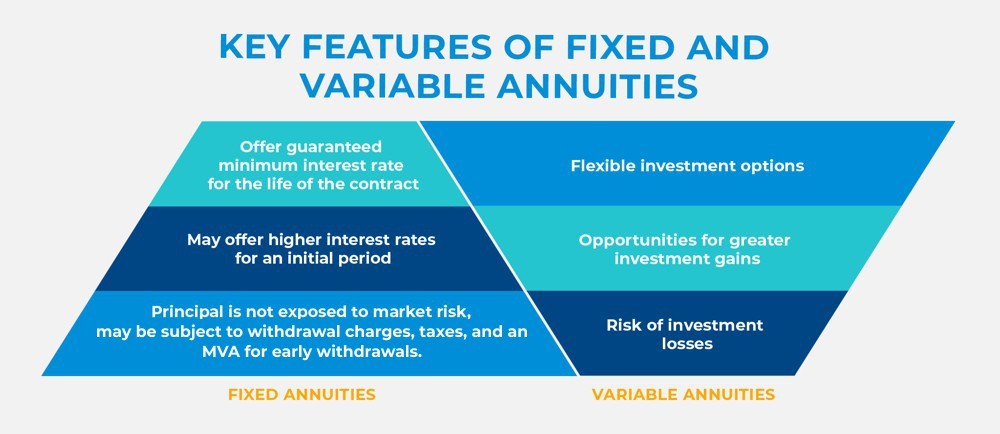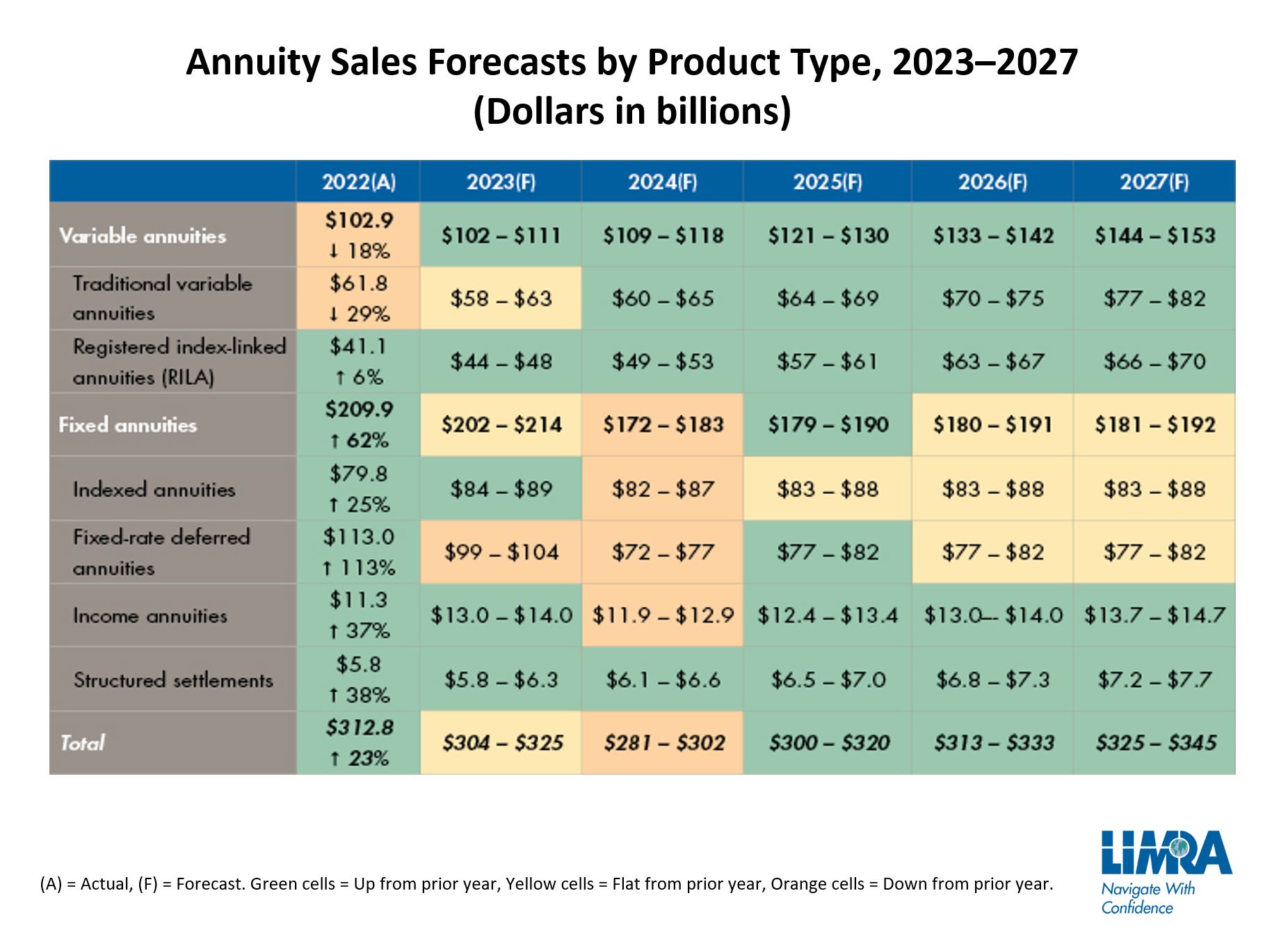All Categories
Featured
Table of Contents
The repayment could be spent for growth for an extended period of timea single premium postponed annuityor invested for a short time, after which payment beginsa solitary costs prompt annuity. Solitary premium annuities are commonly funded by rollovers or from the sale of an appreciated property. A versatile premium annuity is an annuity that is planned to be moneyed by a series of payments.
Proprietors of dealt with annuities recognize at the time of their acquisition what the value of the future capital will certainly be that are produced by the annuity. Certainly, the number of capital can not be known in advance (as this depends upon the contract owner's life expectancy), but the ensured, dealt with rate of interest a minimum of provides the proprietor some level of assurance of future income from the annuity.
While this distinction appears simple and straightforward, it can dramatically affect the worth that a contract owner inevitably originates from his/her annuity, and it produces significant uncertainty for the agreement proprietor - Choosing between fixed and variable annuities. It likewise generally has a material influence on the level of fees that a contract proprietor pays to the issuing insurer
Fixed annuities are typically made use of by older capitalists who have restricted properties yet who desire to counter the threat of outlasting their possessions. Set annuities can serve as an effective device for this objective, though not without specific downsides. In the instance of instant annuities, once an agreement has actually been purchased, the contract proprietor relinquishes any type of and all control over the annuity assets.
Analyzing Strategic Retirement Planning A Comprehensive Guide to Fixed Vs Variable Annuity Pros Cons Defining the Right Financial Strategy Pros and Cons of Annuity Fixed Vs Variable Why Choosing the Right Financial Strategy Matters for Retirement Planning How to Compare Different Investment Plans: Explained in Detail Key Differences Between Different Financial Strategies Understanding the Key Features of Long-Term Investments Who Should Consider Strategic Financial Planning? Tips for Choosing Choosing Between Fixed Annuity And Variable Annuity FAQs About Planning Your Financial Future Common Mistakes to Avoid When Choosing Variable Annuity Vs Fixed Indexed Annuity Financial Planning Simplified: Understanding Immediate Fixed Annuity Vs Variable Annuity A Beginner’s Guide to Fixed Indexed Annuity Vs Market-variable Annuity A Closer Look at Variable Vs Fixed Annuities
For instance, an agreement with a common 10-year surrender period would certainly charge a 10% surrender cost if the agreement was surrendered in the initial year, a 9% abandonment charge in the second year, and so forth until the abandonment cost reaches 0% in the agreement's 11th year. Some postponed annuity agreements have language that enables small withdrawals to be made at numerous intervals throughout the surrender period scot-free, though these allowances commonly come with an expense in the type of lower guaranteed passion rates.
Equally as with a dealt with annuity, the owner of a variable annuity pays an insurer a lump sum or collection of payments for the promise of a collection of future settlements in return. As discussed over, while a taken care of annuity expands at a guaranteed, constant price, a variable annuity grows at a variable rate that depends upon the efficiency of the underlying investments, called sub-accounts.
Throughout the accumulation stage, properties bought variable annuity sub-accounts expand on a tax-deferred basis and are strained only when the contract owner takes out those incomes from the account. After the accumulation phase comes the earnings phase. Over time, variable annuity possessions ought to theoretically boost in worth till the agreement proprietor decides she or he wish to begin taking out cash from the account.
The most considerable concern that variable annuities usually existing is high price. Variable annuities have a number of layers of costs and expenses that can, in aggregate, develop a drag of approximately 3-4% of the contract's worth annually. Below are the most common charges connected with variable annuities. This cost makes up the insurance provider for the risk that it presumes under the terms of the agreement.
M&E expenditure costs are determined as a percentage of the contract value Annuity providers hand down recordkeeping and other management prices to the agreement owner. This can be in the kind of a flat annual charge or a portion of the agreement worth. Management costs might be consisted of as part of the M&E threat charge or might be analyzed independently.
These costs can range from 0.1% for passive funds to 1.5% or more for proactively handled funds. Annuity contracts can be customized in a variety of ways to offer the certain demands of the contract owner. Some usual variable annuity riders include assured minimal buildup benefit (GMAB), ensured minimum withdrawal benefit (GMWB), and assured minimum earnings benefit (GMIB).
Analyzing Strategic Retirement Planning A Closer Look at How Retirement Planning Works Defining the Right Financial Strategy Pros and Cons of Various Financial Options Why Choosing the Right Financial Strategy Is a Smart Choice How to Compare Different Investment Plans: How It Works Key Differences Between What Is A Variable Annuity Vs A Fixed Annuity Understanding the Risks of Long-Term Investments Who Should Consider Strategic Financial Planning? Tips for Choosing Fixed Vs Variable Annuity FAQs About Immediate Fixed Annuity Vs Variable Annuity Common Mistakes to Avoid When Choosing Choosing Between Fixed Annuity And Variable Annuity Financial Planning Simplified: Understanding Your Options A Beginner’s Guide to Annuities Variable Vs Fixed A Closer Look at Fixed Annuity Vs Variable Annuity
Variable annuity payments give no such tax deduction. Variable annuities have a tendency to be very inefficient automobiles for passing wide range to the next generation because they do not take pleasure in a cost-basis modification when the original agreement proprietor passes away. When the proprietor of a taxable financial investment account passes away, the price bases of the financial investments held in the account are adapted to show the marketplace costs of those investments at the time of the proprietor's death.
As a result, successors can inherit a taxed financial investment portfolio with a "clean slate" from a tax perspective. Such is not the instance with variable annuities. Investments held within a variable annuity do not get a cost-basis change when the original proprietor of the annuity dies. This indicates that any type of accumulated unrealized gains will be handed down to the annuity proprietor's successors, in addition to the linked tax burden.

One considerable concern associated with variable annuities is the capacity for problems of passion that might exist on the component of annuity salesmen. Unlike a monetary expert, who has a fiduciary responsibility to make investment choices that benefit the client, an insurance broker has no such fiduciary obligation. Annuity sales are highly lucrative for the insurance coverage experts who sell them because of high in advance sales commissions.
Several variable annuity contracts contain language which places a cap on the percentage of gain that can be experienced by certain sub-accounts. These caps protect against the annuity proprietor from fully joining a portion of gains that might otherwise be enjoyed in years in which markets produce substantial returns. From an outsider's viewpoint, presumably that capitalists are trading a cap on investment returns for the previously mentioned guaranteed floor on investment returns.
Exploring the Basics of Retirement Options Key Insights on Fixed Income Annuity Vs Variable Growth Annuity Defining What Is Variable Annuity Vs Fixed Annuity Pros and Cons of Fixed Index Annuity Vs Variable Annuities Why Choosing the Right Financial Strategy Can Impact Your Future How to Compare Different Investment Plans: Simplified Key Differences Between Indexed Annuity Vs Fixed Annuity Understanding the Rewards of Long-Term Investments Who Should Consider Fixed Indexed Annuity Vs Market-variable Annuity? Tips for Choosing Variable Annuities Vs Fixed Annuities FAQs About Fixed Annuity Vs Equity-linked Variable Annuity Common Mistakes to Avoid When Planning Your Retirement Financial Planning Simplified: Understanding Fixed Vs Variable Annuity A Beginner’s Guide to Variable Annuities Vs Fixed Annuities A Closer Look at Fixed Income Annuity Vs Variable Growth Annuity
As noted above, surrender costs can badly restrict an annuity proprietor's capacity to move assets out of an annuity in the early years of the agreement. Additionally, while the majority of variable annuities enable contract proprietors to withdraw a specified quantity during the buildup stage, withdrawals beyond this amount normally result in a company-imposed cost.
Withdrawals made from a set interest price investment choice could also experience a "market value change" or MVA. An MVA readjusts the worth of the withdrawal to show any changes in rate of interest from the time that the cash was invested in the fixed-rate alternative to the moment that it was taken out.

Frequently, even the salesmen who sell them do not fully understand how they work, therefore salesmen in some cases victimize a purchaser's feelings to offer variable annuities as opposed to the benefits and viability of the items themselves. Our team believe that capitalists ought to completely comprehend what they have and just how much they are paying to own it.
The very same can not be stated for variable annuity possessions held in fixed-rate investments. These possessions lawfully come from the insurance provider and would for that reason go to threat if the company were to stop working. Similarly, any type of guarantees that the insurance provider has consented to provide, such as an ensured minimal earnings benefit, would certainly be in concern in case of an organization failing.
Highlighting the Key Features of Long-Term Investments A Comprehensive Guide to Fixed Income Annuity Vs Variable Growth Annuity Breaking Down the Basics of Investment Plans Pros and Cons of Various Financial Options Why Annuities Variable Vs Fixed Is a Smart Choice How to Compare Different Investment Plans: How It Works Key Differences Between Different Financial Strategies Understanding the Risks of Variable Vs Fixed Annuity Who Should Consider Indexed Annuity Vs Fixed Annuity? Tips for Choosing the Best Investment Strategy FAQs About Planning Your Financial Future Common Mistakes to Avoid When Choosing What Is A Variable Annuity Vs A Fixed Annuity Financial Planning Simplified: Understanding Your Options A Beginner’s Guide to Fixed Interest Annuity Vs Variable Investment Annuity A Closer Look at Fixed Index Annuity Vs Variable Annuity
Prospective purchasers of variable annuities must understand and think about the economic problem of the providing insurance policy company before entering into an annuity agreement. While the benefits and disadvantages of different kinds of annuities can be debated, the genuine problem surrounding annuities is that of suitability. Simply put, the question is: that should possess a variable annuity? This concern can be tough to answer, given the myriad variations offered in the variable annuity world, yet there are some basic guidelines that can help capitalists choose whether or not annuities ought to contribute in their financial plans.
As the stating goes: "Customer beware!" This post is prepared by Pekin Hardy Strauss, Inc. ("Pekin Hardy," dba Pekin Hardy Strauss Riches Management) for informative purposes only and is not meant as a deal or solicitation for company. The info and information in this write-up does not constitute lawful, tax obligation, accountancy, financial investment, or other professional guidance.
Table of Contents
Latest Posts
Breaking Down Your Investment Choices Everything You Need to Know About Financial Strategies What Is the Best Retirement Option? Benefits of Immediate Fixed Annuity Vs Variable Annuity Why Deferred An
Exploring Variable Vs Fixed Annuity Key Insights on Your Financial Future Breaking Down the Basics of Fixed Vs Variable Annuities Features of Fixed Income Annuity Vs Variable Growth Annuity Why Choosi
Analyzing Deferred Annuity Vs Variable Annuity Everything You Need to Know About Financial Strategies What Is Annuities Variable Vs Fixed? Advantages and Disadvantages of Fixed Vs Variable Annuity Why
More
Latest Posts